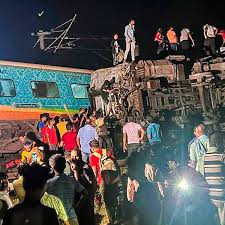
Train Accidents: A Closer Look
Train accidents are a serious concern that can have far-reaching consequences. Understanding the causes of train accidents, their impacts, and the safety measures in place is crucial for ensuring the well-being of passengers and railway personnel.
Causes of Train Accidents
Train accidents can occur due to various factors, including human error, mechanical failures, track defects, weather conditions, and signal malfunctions. Human factors such as driver fatigue, distraction, or miscommunication can contribute to accidents. Mechanical failures in the train’s components or infrastructure issues can also lead to incidents.
Impacts of Train Accidents
The impacts of train accidents can be devastating, resulting in injuries, fatalities, property damage, and service disruptions. Passengers and railway staff may suffer physical harm or emotional trauma in the event of an accident. Communities near the accident site may also face environmental hazards or economic repercussions.
Safety Measures
To prevent train accidents and mitigate their effects, various safety measures are implemented. These include regular maintenance checks on trains and tracks, training programs for staff members to enhance safety awareness and response capabilities, as well as advanced technologies like automatic braking systems and signal controls.
Passengers can also contribute to their safety by following onboard instructions, staying clear of restricted areas, and reporting any suspicious activities or hazards to authorities promptly.
In Conclusion
Train accidents are a serious issue that requires proactive measures from all stakeholders involved in railway operations. By understanding the causes of train accidents, being aware of their impacts, and adhering to established safety protocols, we can work together to create a safer environment for everyone travelling by train.
Common Questions about Train Accidents: Causes, Notable Incidents, and Documentation
- What happens in a train accident?
- How do you write a train accident?
- What was the most famous train crash?
- What was the biggest train crash in the UK?
What happens in a train accident?
In a train accident, various scenarios can unfold depending on the nature and severity of the incident. Passengers and crew members may sustain injuries ranging from minor cuts and bruises to more serious harm such as fractures or concussions. In extreme cases, fatalities can occur. Property damage to the train itself, surrounding infrastructure, and nearby structures may also result from a train accident. Service disruptions, emergency response efforts, investigations into the cause of the accident, and potential legal proceedings are common outcomes following such incidents. It is essential for passengers to remain calm, follow safety protocols, and cooperate with authorities in the event of a train accident to ensure the best possible outcome for all involved.
How do you write a train accident?
When documenting a train accident, it is essential to provide a detailed and accurate account of the incident. Start by describing the location, date, and time of the accident. Include information about the train involved, such as its type, route, and any identifying numbers or markings. Describe the sequence of events leading up to the accident, including any factors that may have contributed to it, such as weather conditions or mechanical issues. Document the consequences of the accident, such as injuries sustained, damage to property, and any emergency response efforts. Finally, ensure that your report is clear, concise, and follows any specific guidelines or requirements set forth by relevant authorities or organisations.
What was the most famous train crash?
One of the most famous train crashes in history is the Great Train Wreck of 1918, also known as the “Nashville, Tennessee, train disaster.” This tragic incident occurred on July 9, 1918, when two passenger trains collided head-on near Nashville, resulting in a catastrophic loss of life. The collision was attributed to a signaling error and miscommunication between railway operators. The Great Train Wreck of 1918 remains a poignant reminder of the importance of stringent safety protocols and effective communication in preventing such devastating accidents on railway networks worldwide.
What was the biggest train crash in the UK?
One of the most significant train crashes in the UK’s history occurred on October 8, 1952, at Harrow and Wealdstone station in London. This tragic incident involved multiple trains colliding, resulting in a devastating loss of life and injuries. The crash at Harrow and Wealdstone remains one of the deadliest railway accidents in the UK, serving as a stark reminder of the importance of stringent safety measures and continuous efforts to prevent such catastrophic events from happening again.
